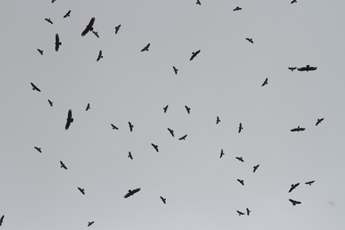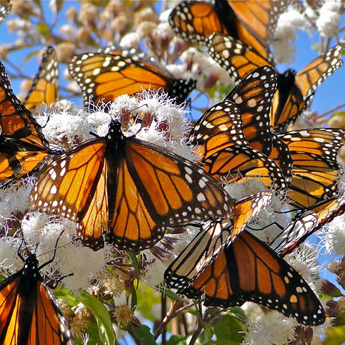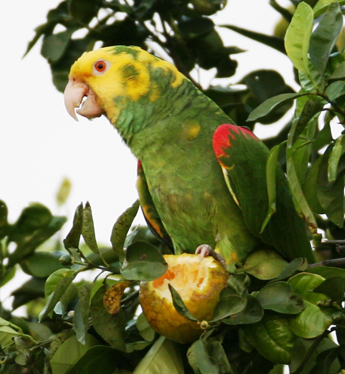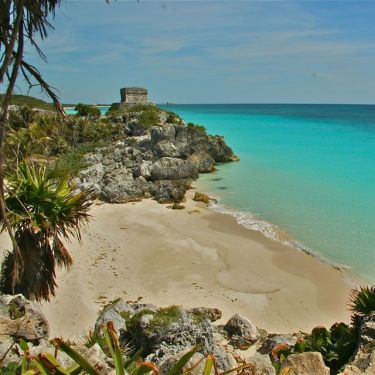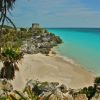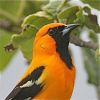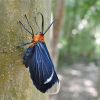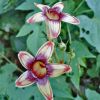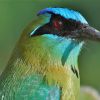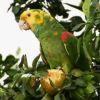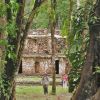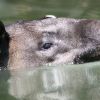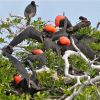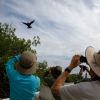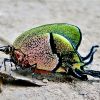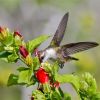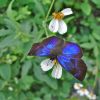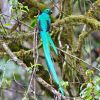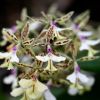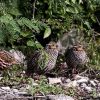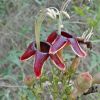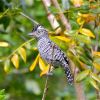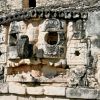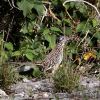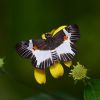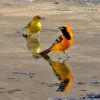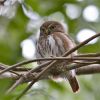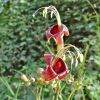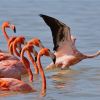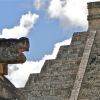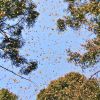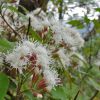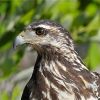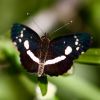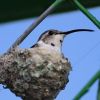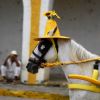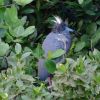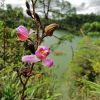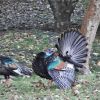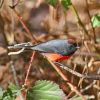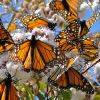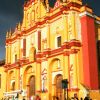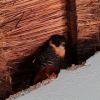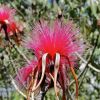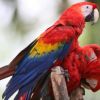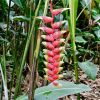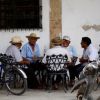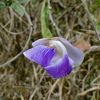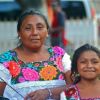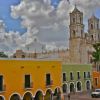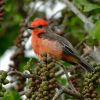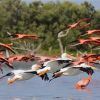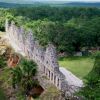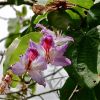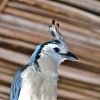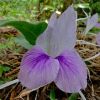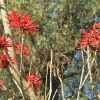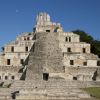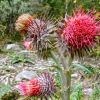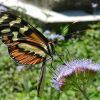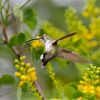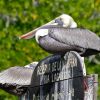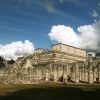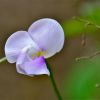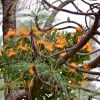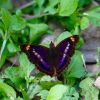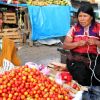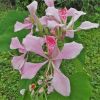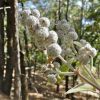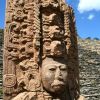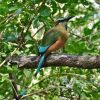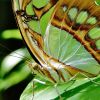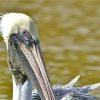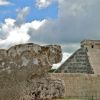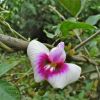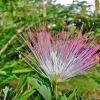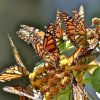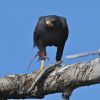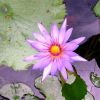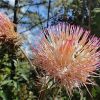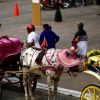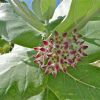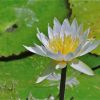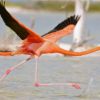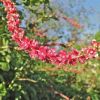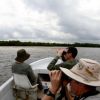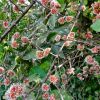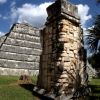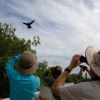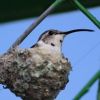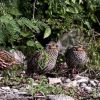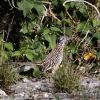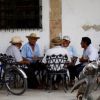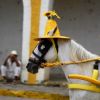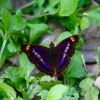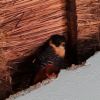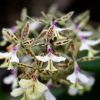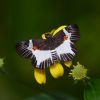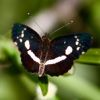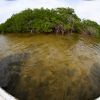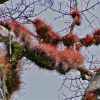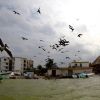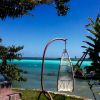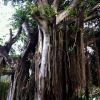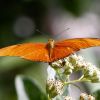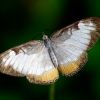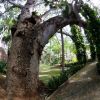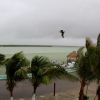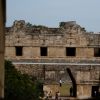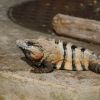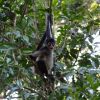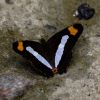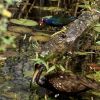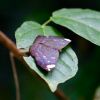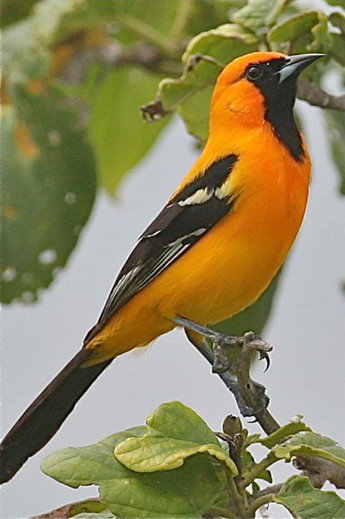Day1
Arrival in Guadalajara. We start this tour from Guadalajara airport from where we drive south towards the hilly region of Jalisco. We spend the first night at Laguna Chapala, birding nearby if time permits.
Day2
Today we drive further South, first visiting a great wetland with reed beds which we will check out. During this time of the year it is a perfect place to admire one of the great birding sceneries: huge masses of Yellow-headed Blackbirds mixed with Bronzed and Brewer's Cowbirds and hundreds of Red-wings. Later on we cross Ciudad Guzman and continue towards Colima – pretty close to the massive peaks of 2 towering volcanic cones. Both well above 10000 feet, so they have several vegetation levels. We will search various birds mainly at the lower slopes where pine and oak forests dominate the area. We will search for the elusive Aztec Thrush and the secretive Long-tailed Wood-partridge. Orioles will be represented by Black-vented and Dickey's Orioles. Beside the commoner Warblers we should find the striking Red and the local Colima Warbler. Other sought after songbirds are Chestnut-sided Shrike-vireo, Grey-collared Becard and Dwarf Vireo. We should hear and then localize Spotted and Happy Wrens as well at the forest edges. In the meadow areas we have a chance for Lesser Roadrunner or Singing Quail. During the evening we will listen for and try to locate Mexican Whip-poor-will, Whiskered Screech and Mountain Pygmy Owl and Buff-collared Nightjar. Night at Colima.
Day3
After a morning birding we travel towards Puerto Vallarta, alongside the Pacific Coast but with as many birding stops as possible: first in Colima, later in Jalisco. A small detour to Barranca el Choncho can produce a few interesting species such as West Mexican Chachalaca, Lilac-crowned Parrot, Flammulated Flycatcher, Golden Vireo. Among the various Hummingbirds we should look for Mexican Hermit, Golden-crowned Emerald and Sparkling-tailed Woodstar. Couple hours later we stop a few kms after crossing El Tuito to check an area for parrots and parakeets. Military Macaw, Lilac-crowned Parrot and Orange-fronted Parakeet are possible. Later we reach Puerto Vallarta. Here we stop at Bahia de Banderas to check out waders and other shorebirds, including Herons, Egrets, Ibises, Plovers, sandpipers and more. Seabirds usually further out, but with some luck we can see Blue-footed Booby or Heerman's Gull. The bay is also a mating and birthplace of Humpback Whales. Finally we arrive to San Pancho in the evening where we will stay 2 nights.
Day4
After the previous day's long transfer with several stops we plan today discover the incredibly bird-reach area mainly on foot. There is a good chance to see more than 100 species just in walking distance from our accommodation, including many sought after, colourful endemic species such as Russet-crowned Motmot, Mexican Parrotlet, Citreoline Trogon, Golden Vireo and Black-throated Magpie-jay. Searching and finding any of these are really exciting birding moments. We have a good chance for San Blas Jays, Blue Buntings and Stripe-headed Sparrows as well.
At the nearby lagoon and beach we can try again to see Blue-footed Booby or Heerman's Gull. It is a good place to see various wintering waders and ducks, plus Northern Jacana or Least Grebe. Among the Egrets, Herons and Ibises we should find Bare-throated Tiger-heron as well. During the evening we should look for Black-crowned Night-herons, Bat Falcon and Ferruginous Pygmy Owl.
Day5
A morning birding close to our accommodation can result Bright-rumped Attila, Elegant
Trogon, Orange-billed Nightingale-thrush and many more. Tree-trunks are searched by Ivory-billed Woodcreeper, Lineated Woodpecker and we will try to find Golden-cheeked Woodpecker as well.
Later we check the coastal scrub-thorn forests for Red-breasted Chat and the strikingly attractive Orange-breasted Bunting. It is a good place to have a second chance for San Blas Jay and the scarce Flammulated Flycatcher.
Finally we leave San Pancho area and start to make our way North towards San Blas, but again with as many good birding stops as possible. We might try to check first a little village, La Penita de Jaltemba for Grey-breasted Martins and then make a detour to Cerro de San Juan. There is a wide variety of colourful birds to look for here: Blue Mockingbird, Red-headed and Flame-coloured Tanagers, Audubon's/Dickey's Oriole, Crescent-chested and Red-faced Warblers, Golden Vireo and Green Jay. On the trees Grey-crowned and Arizona woodpeckers, White-striped and Ivory-billed Woodcreepers search for food. At the more open and scrubby areas we should look for Lesser Roadrunner, Elegant Quail, Rusty-crowned Ground-sparrow and Spotted Wren.
Late afternoon we continue on an old, winding road to a great lookout point at El Mirador del Aguila. This place gives us a second chance to view Military Macaws and some raptors, like Red-tailed & Zone-tailed Hawks.
Finally in the evening we arrive to San Blas where we will spend 2 nights.
Day6
San Blas and its vicinity is a well-known birding paradise and it will be hard to decide which areas we should concentrate during our limited time. During a pre-breakfast birding between our hotel and Rio San Cristobal area we will look for Rufous-bellied Chachalaca, Russet-crowned Motmot, Mexican Parrotlet, Citreoline Trogon, Black-throated Magpie-jay. Beside Happy and Sinaloa Wrens we have a chance for Purple-backed Jay and Rufous-backed Thrush as well.
If we have missed anything here we have another chance at La Bajada area. It is also a good area for San Blas Jays, Blue Grosbeak, Painted Bunting, Rusty-crowned Ground-Sparrow, Gray-crowned Yellowthroat and Rosy-crowned Ant-tanager as well. Yellow-winged Cacique, Grey-crowned Woodpecker, Brown-backed Solitaire and Golden Vireo is also a sought-after bird here. About 10 different Hummingbirds are possible with key species like Berylline Hummingbird, Mexican Hermit & Mexican Woodnymph.
During early afternoon we return to San Blas to have a lunch followed by a late afternoon-evening boat tour to a mangrove-fringed lagoon-estuary home to hundreds of egrets, ibises, herons, including Boat-billed Heron, Bare-throated Tiger-Heron and a wide variety of wading birds. Raptors should be represented by Crane Hawk, Common Black-hawk, Hook-billed and Snail Kite, Laughing Falcon. Typical mangrove birds are Mangrove Cuckoo, Mangrove Vireo and Mangrove Warbler. We return back with a chance to hear/see some of the night birds like Lesser Nighthawks and Common Paraques, but with some luck we should have Mottled Owl and Northern Potoos as well.
Day7
After another great morning birding and breakfast we drive out from San Blas but soon stop around Singayta. This area has a long bird list, being one of the best sites around San Blas, but of course it depends on many factors which species we will find. Some of the possibilities are: Rusty-crowned Ground-sparrow, Black-vented Oriole, Fantailed Warbler, Russet-crowned Motmot, Citrioline Trogon, Rufous-bellied Chachalaca, Lesser Ground-Cuckoo, Ferruginous Pygmy-Owl, Cinnamon Hummingbird, Russet-crowned Motmot, Pale-billed & Lineated Woodpecker, Ivory-billed Woodcreeper, Black-throated Magpie-Jay, San Blas Jay, Happy Wren, Orange-billed Nightingale-Thrush, Scrub Euphonia. Beside these local species during this time of year quite a lot of wintering migrants and vagrants also can be encountered here.
Later on finally we hastily leave San Blas area and continue our journey North towards the Tufted Jay Preserve in the Sierra Madre Occidental. It is about a 300kms-long drive, good part of it on highway, but the last bit on the only hard-surfaced road across the hills towards Durango. We plan to arrive at our accommodation before dark, so we can have a chance for some birding.
Day8
The several thousand hectares large Tufted Jay Preserve and its surrounding area provides excellent birding possibilities close to the edge of the San Diego Canyon. Barranca Rancho Liebre is a truly mesmerizing birding place, always a highlight on any tours.
A morning walk in the pine forest can produce various species from Mexican/Yellow-eyed Juncos, Chipping Sparrows, Spotted Towhees through Tufted Flycatcher, Mexican Chickadee till Red-headed Tanager or even a Grey-collared Becard. Among the various Warblers possible here we should mention Olive, Hermit, Colima, Red, Red-faced, Crescent-chested, Golden-browed and Rufous-capped Warblers. Tree-trunks are searched by White-striped & Ivory-billed Woodcreepers and Arizona Woodpeckers.
It is possible to find Rufous-capped and Green-striped Brush-finches, Spotted Wren,
Blue-hooded Euphonia, Russet Nightingale-thrush, Hutton's Vireo, Eastern Bluebird, Brown-backed Solitaire, Scott's Oriole and Black-headed Siskin. Some of the Hummingbirds to look for include Violet-crowned and Bumblebee Hummingbirds, plus Plain-capped Star-throat.
Steller's Jays can be common. But of course the main reason why it is a magical place for birding that it is the only area where we can frequently encounter the attractive and very localized Tufted Jays. What is more that there is also a chance to find other exciting species, such as Mountain Trogon or even sometimes Eared Quetzal.
An evening walk can yield Colima Pygmy Owl, Whiskered Screech-Owl or Stygian Owl.
Day9
As soon as possible in the morning we go up on the Panuco Road driving and walking. Dozens of various species are possible here, so we just mention a few to look for like Military Macaw, Yellow Grosbeak, Pyrrhuloxia, Colima Pygmy Owl, Nutting's Flycatcher, Blue Mockingbird, Green-tailed Towhee, Black-capped Vireo, Flame-coloured Tanager, Russet-crowned Motmot. It is also a very good place for several Hummingbird species like Broad-billed, Berylline & Violet-crowned Hummingbird, Golden.crowned Emerald & Sparkling-tailed Woodstar just to mention a few.
Finally we have to say goodbye to this great area and drive down the slopes of Sierra Madre Occidental and continue towards Central Mexico for another unforgettable experience, to spend a couple of days with the millions of Monarchs, one of nature's most spectacular phenomena. Night at Laguna de Chapala, close to Guadalajara.
Day10
After saying goodbye for those who can not continue with us and pick up those who just join for the second part of our tour, we travel further East, leaving Jalisco and entering Michoacan towards the Eastern part of it, beyond Morelia. If we have time, we leave the highway and visit Morelia which is one of the nicest, charming colonial towns of whole Mexico. That is why it is declared a national monument. East of the town we can cross into different National Park areas, protected more than 70 years. Late afternoon or evening we arrive at Angangueo, a little mountain town close to 2 Monarch Butterfly Sanctuaries. We will be based here for 2 nights.
Day11
Today we will have a short drive and then a walk to the El Chincua Monarch Reserve. It is worth stopping at the very first Monarch butterfly to examine in detail the beauty of it. Even a single specimen is an amazing creature. But here you will have a chance to enjoy the incredible sight of gathering of millions of Monarchs. Some of the Oyamel Fir trees are so covered by them like specially ornamented Christmas trees! Imagine a forest of these "Christmas trees" full with lively, brilliant colours, more and more movement and flashes of wings as the air warms up and finally a swarm of butterflies leave the trees, dancing in the air and you will be surrounded by the sound, movement and flash of colours of hundreds of thousands of Monarchs!
Truly an unforgettable experience, hard to describe, better to feel it!
Day12
Today we visit the most famous Monarch Sanctuary, El Rosario. Traditionally this is the place where the largest colonies can be found, so it can be more popular with other visitors as well. During our walk here we gain about 300 meters elevation, so it is a climb, but we can take our time the find more attractive wildflowers, birds and other wildlife. Among the Geraniums and Salvias we will look out for Slate-throated Redstart, Brown-throated and Grey-barred Wren, Hermit Warbler, Green-striped Brushfinch and Russet Nightingale-Thrush.
When we arrive to one of the main colonies even after yesterday's experience we will be surprised by the fact that the pine trees are so covered in masses of butterflies that not just twigs, but even large branches are bending under the sheer weight of the Monarchs! You can actually hear a constant buzzing in the air, almost like wind through pine-leaves, but it is actually the wing-beats of millions of butterflies!
Usually the number of butterflies continuously build up for months. This is the reason why we plan our visit during February when the peak numbers occur.
If we try to look for birds again we will have a good chance to find Ladder-backed Woodpecker, Red-tailed Hawk, Mexican Chickadee, Gray Silky and many more, such as the melodious Brown-backed Solitaire.
Later on we travel further to the nearby Laguna de Avandaro, which sits in a mountain area with breath-taking scenery. The whole region is covered with trees. A pleasant place to stay for 2 night close to the picturesque, typical Mexican town of Valle de Bravo with colonial buildings and cobbled streets.
Day13
Before we start our last visit to a Monarch Reserve it is worth looking around the lake for different birds. The most common ones are Ring-billed Gulls, American Coots and Pied-billed Grebe.
As the air warms up we should see the first butterflies flying around, such as Orange-barred Sulphur , Two-tailed Swallowtail or Pale-banded Crescent.
Later on we visit the Piedra Herrada Butterfly Sanctuary, the final one during our tour.
This is a relatively newer one and less visited than then some of the well-known ones. This is why it is a better place to feel and be touched by the natural wonder of the wintering Monarchs despite numbers being smaller here than at the previous places. But it is a much wilder, more natural place than, for example, the famous El Rosario. We hope you will enjoy the walk in the canyon where again we hope to be surrounded by clouds of Monarchs for the last time of our journey. It should be easy to make some macrophotos when the butterflies come down to síp water or get some minerals.
Obviously here again we have a good chance to find many interesting birds such as Buff-breasted Flycatcher, Slate-throated Redstart, Long-billed Thrasher, White-striped Woodcreeper, Striped Sparrow and Olive-backed Towhee. Several hummingbird species are possible including from the miniature Bumblebee through the White-eared to the amazing Magnificent Hummingbird. Numerous Warblers should be around and we should admire Crescent-chested Warbler, Red Warbler, Hermit Warbler and Grace's Warbler.
Day14
After a morning birding we have to say good-bye to this lovely area and finally we travel to Toluca/Mexico City airport for your mid-day flight back home.
Day15
Guest from UK or Europe have overnight flight, arrival home this day
